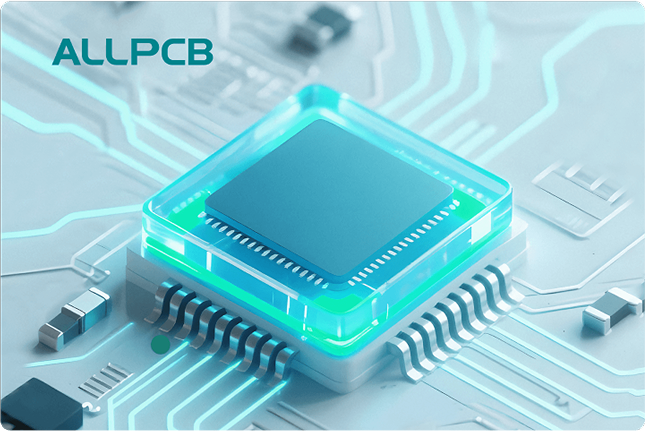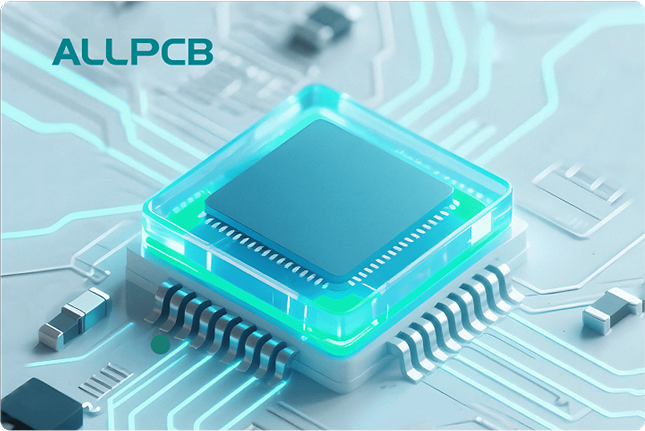Choosing the best microcontroller for IoT PCB design can be a daunting task with so many options available. Whether you're building a smart home device, a wearable sensor, or an industrial monitoring system, the right microcontroller (MCU) can make or break your project. In this guide, we’ll help you navigate the process of selecting a microcontroller for IoT applications, focusing on key factors like power consumption, connectivity, and compatibility with sensors. We’ll also dive into comparisons like ESP32 vs STM32 for IoT, ensuring you have the tools to make an informed decision for your next PCB design.
At its core, the ideal MCU for IoT should balance performance, power efficiency, and cost while meeting the specific needs of your project. Below, we’ll explore the critical aspects of microcontroller selection, compare popular options, and provide practical tips for integrating them into your PCB layouts. Let’s get started with a deep dive into the world of IoT microcontrollers.
Why Microcontroller Selection Matters for IoT PCB Design
In Internet of Things (IoT) applications, microcontrollers serve as the brain of the device, handling data processing, communication, and control tasks. A poor choice can lead to inefficiencies, higher power consumption, or even project failure. For PCB design, the MCU impacts layout complexity, component placement, and power management. Selecting the right one ensures your board operates reliably under the constraints of size, cost, and energy.
For instance, IoT devices often operate on battery power, requiring low-power MCUs to extend runtime. Additionally, many IoT applications demand wireless connectivity, such as Wi-Fi or Bluetooth, which must be supported natively or through external modules. By prioritizing the right specifications early, you can avoid costly redesigns and ensure scalability for future updates.
Key Factors in Selecting a Microcontroller for IoT Sensors and Devices
When choosing a microcontroller for IoT PCB design, several factors come into play. Let’s break them down to help you narrow your options.
1. Processing Power and Performance
The processing power of an MCU determines how well it can handle tasks like data collection, processing sensor inputs, and running algorithms. For simple IoT sensors, an 8-bit or 16-bit MCU with a clock speed of 8-16 MHz might suffice. However, complex applications, such as those involving real-time data analysis or machine learning at the edge, may require 32-bit MCUs with clock speeds exceeding 100 MHz.
For example, a smart thermostat might need only basic processing to read temperature data and control a relay, while a smart camera requires significant computational power for image processing. Match the MCU’s capabilities to your project’s demands to avoid overpaying for unused performance or underperforming in critical tasks.
2. Power Consumption for Low-Power IoT Applications
Power efficiency is critical for battery-powered IoT devices. Look for MCUs with low-power modes, such as sleep or deep-sleep states, which can reduce current draw to microampere levels. For instance, some modern MCUs consume as little as 1-5 μA in sleep mode, extending battery life from months to years.
Consider the duty cycle of your device. If it only needs to wake up periodically to transmit data, prioritize MCUs with fast wake-up times and minimal power draw during idle periods. This is especially important for remote sensors in agriculture or environmental monitoring.
3. Connectivity Options for Wireless Microcontroller PCB Design
IoT devices often rely on wireless communication to send data to the cloud or other devices. Many modern MCUs come with built-in Wi-Fi, Bluetooth Low Energy (BLE), or other protocols like Zigbee or Thread. Choosing an MCU with integrated connectivity reduces the need for external modules, saving space and cost on your PCB.
For example, if your project involves a smart home device, an MCU with dual Wi-Fi and BLE support can connect to a local network and communicate with nearby devices like smartphones. On the other hand, industrial IoT applications might benefit from MCUs supporting long-range protocols like LoRa for wide-area coverage.
4. Peripheral Support and Sensor Compatibility
IoT devices often interface with sensors for temperature, humidity, motion, or other environmental data. Ensure the MCU has enough analog-to-digital converters (ADCs), digital I/O pins, and communication interfaces like I2C, SPI, or UART to connect with your chosen sensors. For instance, a 12-bit ADC with a sampling rate of 1 MSPS (million samples per second) can handle high-precision sensor data, while an 8-bit ADC might suffice for basic readings.
Check the voltage levels supported by the MCU’s pins to avoid compatibility issues with sensors. Many modern MCUs operate at 3.3V, but some sensors may require 5V, necessitating level shifters in your PCB design.
5. Memory and Storage
Memory is another crucial factor. IoT devices often need to store firmware, configuration settings, and sometimes buffered data before transmission. Look for MCUs with sufficient Flash memory (for code storage) and RAM (for runtime operations). A basic IoT sensor might need only 32 KB of Flash and 4 KB of RAM, while a gateway device could require 512 KB of Flash and 64 KB of RAM to handle multiple connections and protocols.
6. Cost and Scalability
Cost is always a consideration, especially for mass-produced IoT devices. While high-end MCUs offer impressive features, they may drive up the bill of materials (BOM). Balance performance with affordability, and consider scalability for future iterations of your product. Choosing an MCU family with multiple variants allows you to upgrade or downgrade based on evolving needs without redesigning your PCB.
IoT Microcontroller Comparison: Popular Choices for PCB Design
With the key selection criteria in mind, let’s compare some widely used microcontrollers for IoT applications. This comparison focuses on performance, power efficiency, connectivity, and suitability for PCB design.
ESP32: A Versatile Option for Wireless IoT
The ESP32 series is a popular choice for IoT due to its integrated Wi-Fi and Bluetooth capabilities. With dual-core processors running at up to 240 MHz, it offers ample power for most IoT tasks, from simple sensors to complex gateways. Its low cost (often under $5 per unit in bulk) and extensive community support make it a go-to for hobbyists and professionals alike.
Pros:
- Built-in Wi-Fi (2.4 GHz and, in some models, 5 GHz) and Bluetooth Low Energy.
- Multiple variants with varying memory and peripheral options (e.g., 520 KB SRAM in base models).
- Low-power modes consuming as little as 5 μA in deep sleep.
Cons:
- Higher power consumption during active Wi-Fi use compared to standalone BLE solutions.
- Limited ADC resolution (12-bit) for high-precision sensor applications.
For PCB design, the ESP32’s compact modules simplify layout by reducing the need for external RF components. However, pay attention to antenna placement and grounding to minimize interference.
STM32: Power and Flexibility for Industrial IoT
The STM32 family offers a wide range of MCUs based on ARM Cortex-M cores, catering to everything from ultra-low-power sensors to high-performance gateways. With clock speeds ranging from 48 MHz to 550 MHz across different models, they provide flexibility for diverse IoT needs. Many models include advanced peripherals like high-resolution ADCs and hardware encryption for secure communication.
Pros:
- Ultra-low-power modes (some models draw under 2 μA in stop mode).
- Extensive peripheral set, including 16-bit ADCs and multiple communication interfaces.
- Scalable across a broad range of performance and price points.
Cons:
- No built-in wireless connectivity in most models, requiring external modules for Wi-Fi or BLE.
- Steeper learning curve due to complex configuration tools.
In PCB design, STM32 MCUs often require more external components for connectivity, increasing layout complexity. However, their robustness makes them ideal for industrial IoT where reliability is paramount.
Other Notable Options for Low-Power IoT Microcontrollers
Beyond these two, other MCUs worth considering include:
- RISC-V Based MCUs: Emerging as a low-cost, open-source alternative with good power efficiency (e.g., some models consume under 10 μA in sleep mode).
- Ultra-Low-Power MCUs: Designed specifically for battery-operated sensors, often with current draws below 1 μA in sleep mode.
These options are ideal for niche applications where specific constraints like power or cost dominate the design requirements.
ESP32 vs STM32 for IoT: Which is the Best Microcontroller for IoT PCB?
The choice between ESP32 and STM32 depends on your project’s priorities. If wireless connectivity is a must and you’re working on a consumer-grade IoT device, ESP32 is often the better pick due to its integrated Wi-Fi and BLE, compact footprint, and lower cost. It shines in applications like smart home devices or wearables, where quick prototyping and community support are valuable.
On the other hand, STM32 excels in industrial IoT settings where reliability, advanced peripherals, and ultra-low power are critical. Its scalability across a wide performance range makes it suitable for everything from simple sensors to complex control systems. However, you’ll need to account for additional components for wireless features, which can increase PCB size and cost.
For example, if you’re designing a smart light bulb, ESP32’s built-in connectivity and sufficient processing power (up to 240 MHz) make it a straightforward choice. Conversely, for a factory monitoring system with multiple high-precision sensors, STM32’s superior ADC capabilities (up to 16-bit resolution) and robust design might be worth the added complexity.
Tips for Integrating Microcontrollers into IoT PCB Design
Once you’ve selected an MCU, integrating it into your PCB design requires careful planning. Here are some actionable tips to ensure success:
1. Optimize Power Distribution
IoT devices often operate under tight power budgets. Use low-dropout (LDO) regulators or switching regulators to provide stable voltage (e.g., 3.3V or 1.8V) to the MCU. Place decoupling capacitors (typically 0.1 μF and 1 μF) close to the MCU’s power pins to minimize noise. For instance, inadequate decoupling can lead to voltage spikes, causing erratic behavior in high-speed MCUs running at 100 MHz or more.
2. Plan for Wireless Signal Integrity
For wireless MCUs, antenna placement is critical. Follow the manufacturer’s guidelines for PCB trace antennas or external antenna connections to avoid signal loss. Maintain a clear ground plane beneath the antenna area and keep high-speed digital traces away to reduce interference. Poor antenna design can degrade Wi-Fi range by up to 50% or more.
3. Minimize PCB Footprint
IoT devices are often compact, so choose MCUs in small packages like QFN or BGA if space is limited. Route traces efficiently and consider multi-layer boards for complex designs to keep the footprint small while accommodating all necessary components.
4. Test and Iterate
Prototype your design to validate MCU performance under real-world conditions. Test power consumption across different operating modes (active, idle, sleep) and ensure sensor data is processed accurately. Use tools like oscilloscopes to check for signal integrity issues, especially if your MCU interfaces with high-speed peripherals.
Conclusion: Finding the Best Microcontroller for IoT PCB Design
Selecting the right microcontroller for IoT PCB design is a balancing act between performance, power efficiency, connectivity, and cost. By understanding your project’s specific needs—whether it’s low-power operation for remote sensors or robust processing for industrial gateways—you can narrow down your options effectively. Popular choices like ESP32 offer integrated wireless features for consumer applications, while STM32 provides unmatched flexibility for industrial use.
Remember to factor in PCB design considerations like power management, signal integrity, and space constraints when integrating your chosen MCU. With careful planning and testing, you can build IoT devices that are reliable, efficient, and ready for the connected world. Whether you’re a beginner or a seasoned engineer, this guide serves as a roadmap to streamline your microcontroller selection process and achieve success in your next IoT project.
 ALLPCB
ALLPCB







